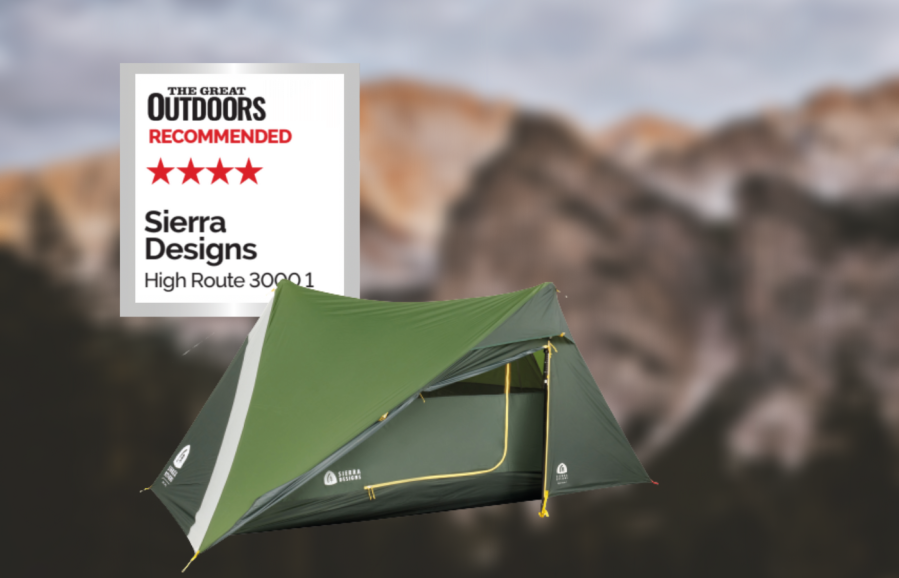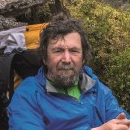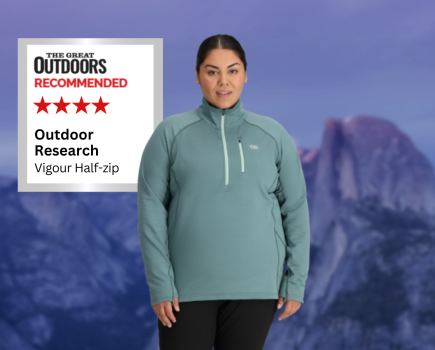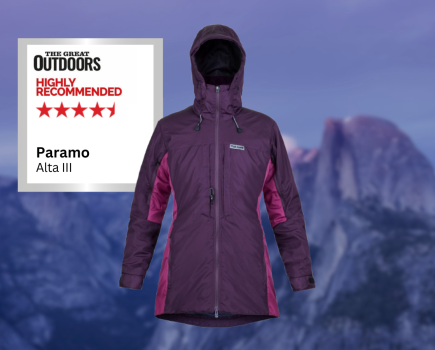Chris Townsend awarded the Sierra Designs High Route 3000 1 a ‘recommended’ label in his review of the best one-person tents. Here’s why.
The Sierra Designs High Route 3000 1 is the European version of a one-person tent that was launched in the USA a few years ago, the High Route 1. The functional difference is in the hydrostatic head of the flysheet and the groundsheet, up from 1200mm to 3000mm in both cases, which should mean better durability and waterproofness, especially with the groundsheet. There’s an aesthetic change too. The original version is a rather bright blue and white, the 3000 1 a much duller two-tone green. The size and design of the two versions are identical. The fabric changes add some 130 grams to the weight, well worth it I think for the tougher groundsheet.
- Price: $300 | £285 (available from Sierra Designs)
- Weight: 1010g
- Pros: pitches with trekking poles, very roomy, makes a good tarp, light
- Cons: minimal porches
Flysheet: 20D nylon ripstop silicone/PU, 3000mm HH | Inner: 20D nylon ripstop silicone/15D nylon mesh | Groundsheet: 30D nylon ripstop, 3000mm hydrostatic head | Poles: n/a, 2 trekking poles needed | Pegs: 9 x 15cm Y | Porches: x 2 , 28cm deep | Inner Dimensions: 259cm x 107ccm, 114cm high in centre
The Sierra Designs High Route 3000 1 is designed to be used as a tarp or tent. It pitches with trekking poles. A little practice is required to set it up but once you get the hang of it it’s easy. The inner is mostly mesh with solid panels at each end. It clips onto the outer.
An asymmetric shape means there’s a long offset ridge, which gives good headroom over a bigger area than with a standard ridge. The side walls are vertical too, which also gives more space than in tents with sloping walls.
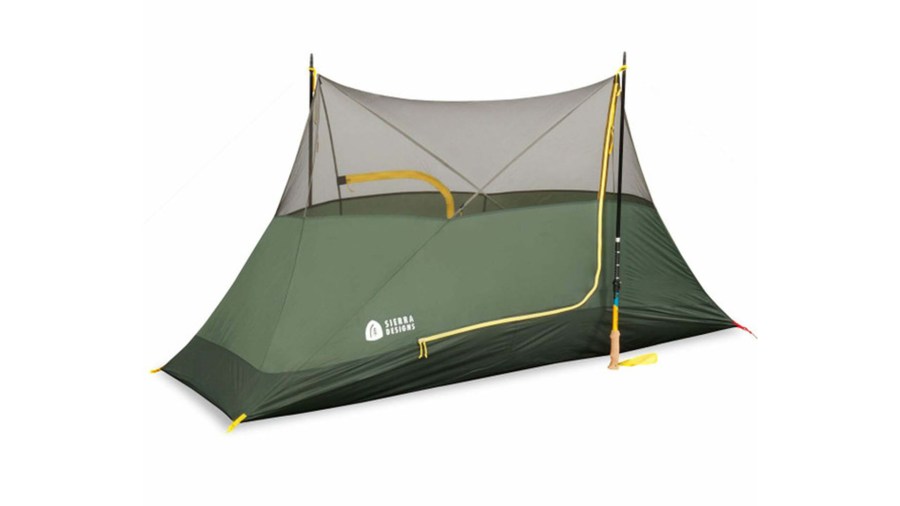
The Sierra Designs High Route 3000 1p’s mesh inner.
The inner is very spacious, the longest of all the tents tested in our comparative review and with the best headroom. Tall people take note! Used as a tarp without the inner the space is vast and could sleep two.
The two porches are both small, however. One is designed for storage, with just short zips for access on inner and outer. The other has a full-length two-way zip with a ventilation hood over the top. There’s no room for cooking in the porches. Your pack can be stored standing up against a pole. The main door can be pegged out with a guyline as an awning to provide a sheltered cooking area as well as good ventilation. This works well and I’ve not had rain coming in. I’d rather have a bigger closed porch though.
Wind resistance is reasonable, though the large panels can flap in strong winds. I love it as a tarp, with the inner just used in midge season.
To read the other tent reviews in this test head to The Great Outdoors‘ best one-person backpacking tents.

Tested by Chris Townsend
Chris tested these tents in the Scottish Highlands, mostly the Cairngorms, over autumn 2021 and winter 2022. Sites were both high and low level and at times the tents were subjected to more severe weather than they are designed for. Note: weights are for the tent complete with stuffsacks.
This review first appeared in the May 2022 issue of The Great Outdoors.

